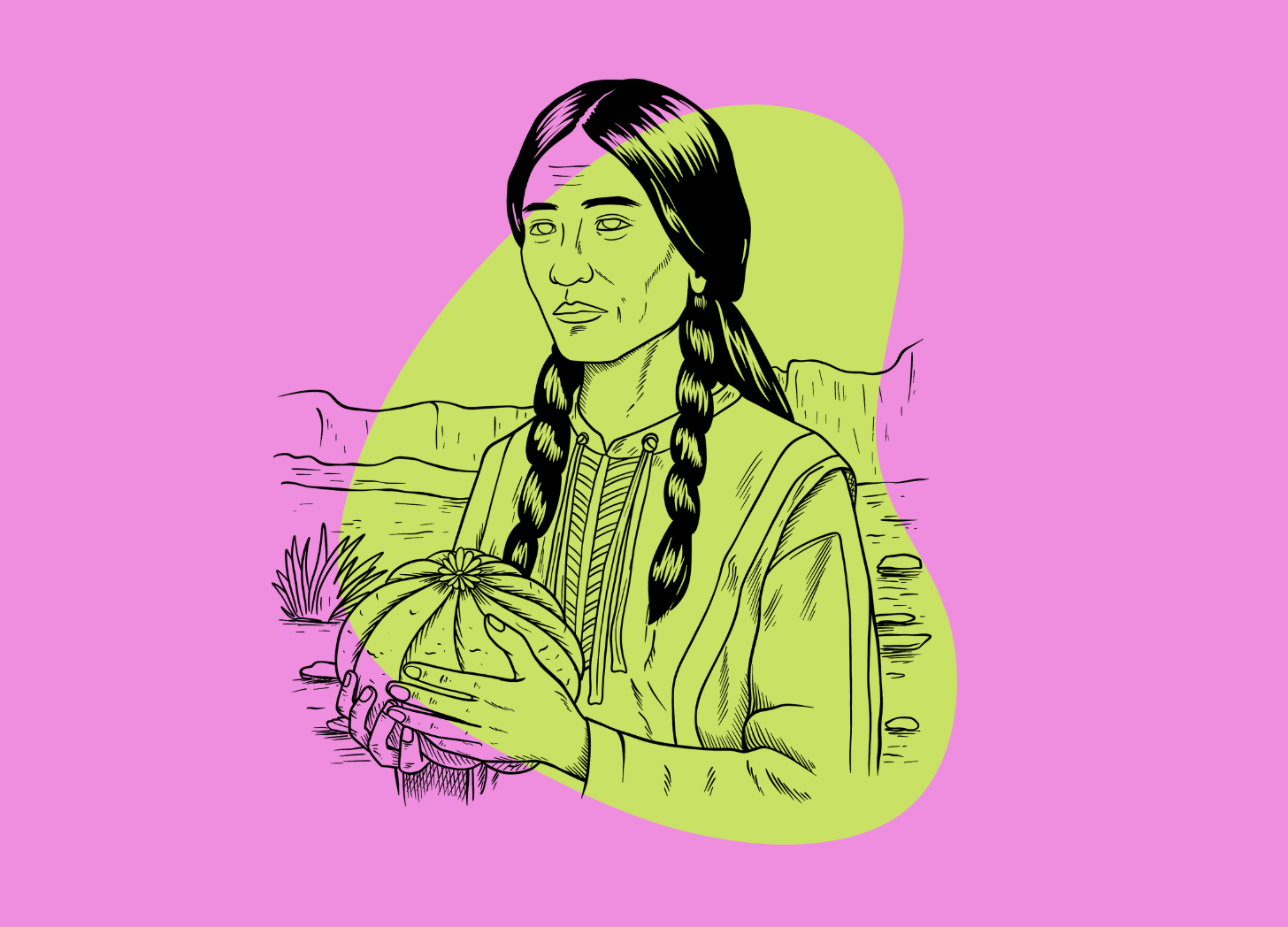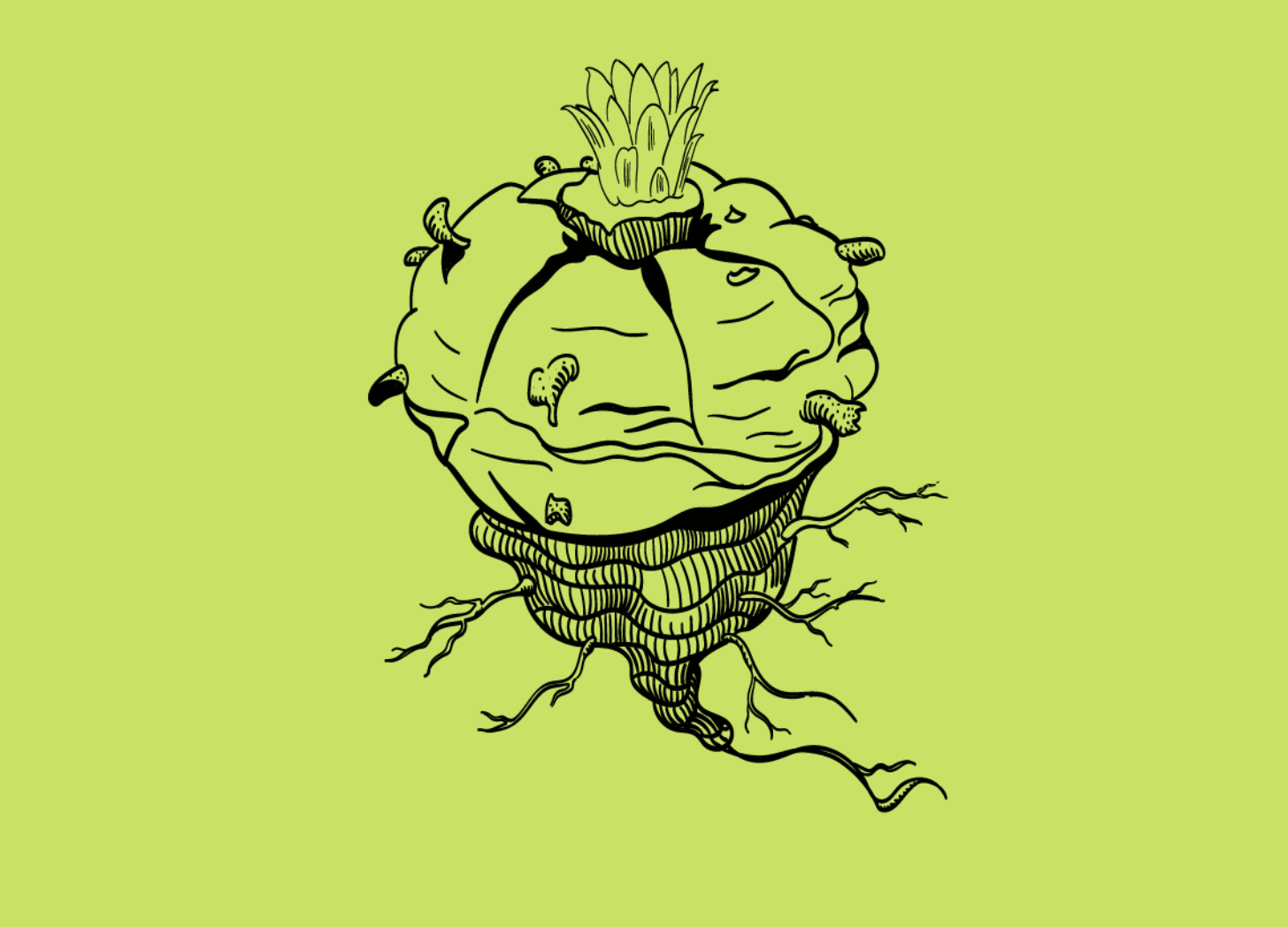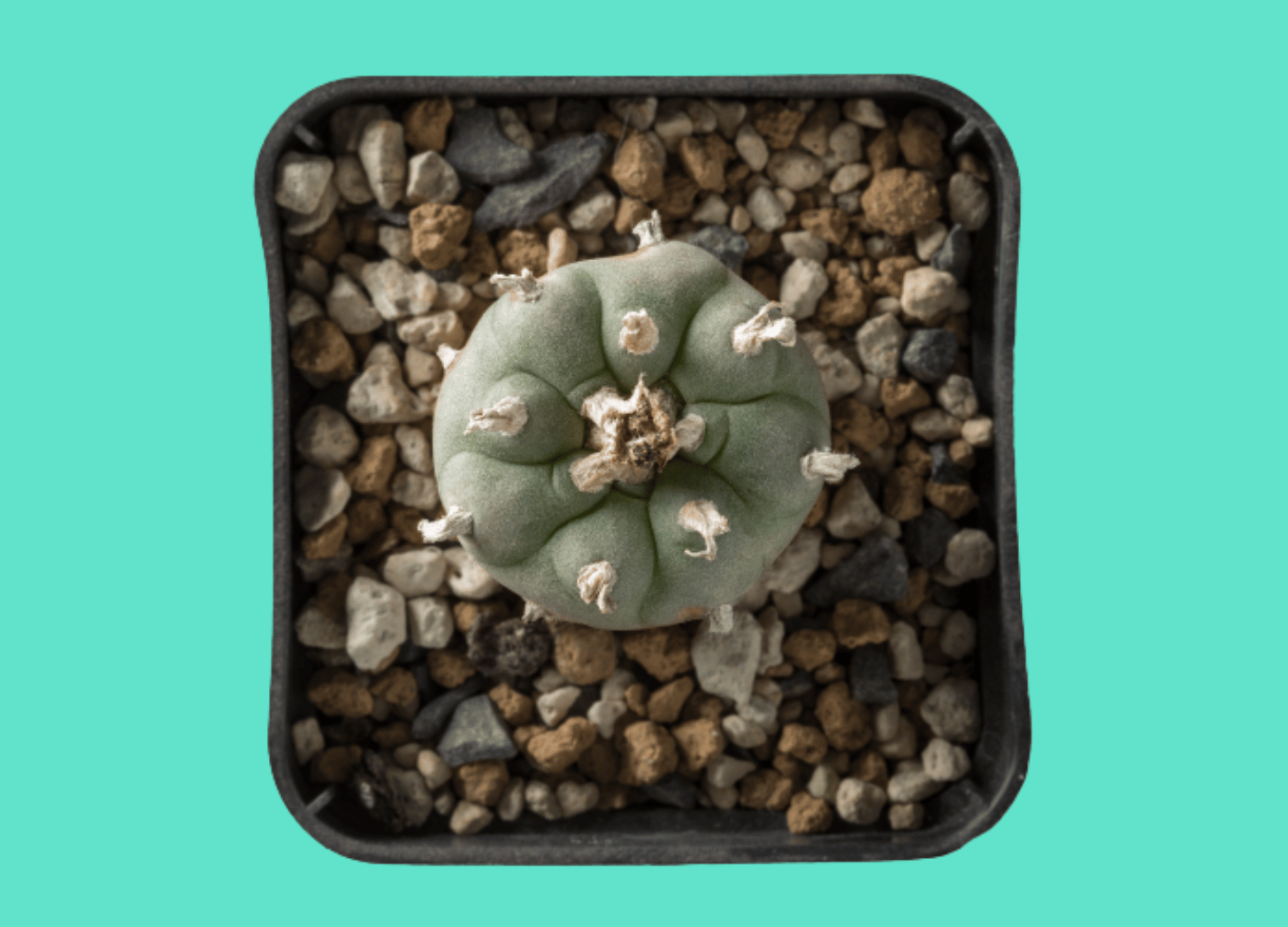Beneath thorn bushes in Southwestern Texas and northeastern Mexico, peyoteros scratch away dry dirt from round, spineless, blue-green peyote cacti. Then, with the blades of flat shovels, they carefully cut away the circular tops, leaving the roots in the soil.
Over the next few years, the Peyote will slowly regenerate, growing into a larger cluster of peyote buttons that can outlive the collector and provide medicine for future generations… That is, if the stretch of land known as the "Peyote Gardens" can survive much longer.
The devastating advances of mining and agriculture have shrunk peyote populations at a time when curiosity and demand for psychedelics are growing.
In theory — only a few indigenous groups in Mexico and peyoteros licensed by the State of Texas and the DEA are allowed to collect Peyote.
In practice — anyone who can make their way into the gardens can harvest the plant, literally and figuratively pulling out its roots.
Peyote, like virtually every other popular psychedelic plant, has become a commodity.
Some Peyote buttons will find their way into local open-air markets in Mexico or underground markets in the United States — stimulating local economies or perhaps becoming fodder on festival dance floors.
Others will be shared around fires with song, prayer, and stories with friends, family, and community, as it has been for thousands of years.
What is Peyote?
Peyote (Lophophora williamsii) is a small button-shaped cactus with a peculiarly high concentration of the long-lasting, phenethylamine-based psychedelic substance known as mescaline.
Indigenous people like the Huichol have used Peyote for as long as anyone can remember. Scientists have found evidence of its use among humans dating back at least 5000 years.
Peyote use is well documented among the Aztec people, who called it peyōtl and used it alongside a suite of other psychedelics — including (but not limited to) ololiuhqui (morning glory) and teonanacatl (magic mushrooms) for healing, ritual, and communion with gods in higher realms.
Both common folk and high priests in ancient times knew Peyote, and after the fall of the Aztecs, other tribes throughout Central America revered Peyote as the 'flesh of the gods.'
Even today, the Wixárika (Huichol) in the Sierra Madre Region of Mexico gather the plant from the sacred ground in full ceremonial regalia, white shirts and pants embroidered with colorful imagery of the blue deer, hummingbird, corn, and other symbols and beings encountered on past peyote journeys.
Peyote is in Danger
Exactly how much Peyote is being harvested from the wild is difficult to know. Some figures suggest one million peyote crowns are sold annually by licensed distributors — but this number doesn't include Mexico or underground markets.
This seems like a ridiculously high amount for a cactus officially listed as a 'high' threat level by the Convention on International Trade in Endangered Species of Wild Fauna and Flora (CITES).
Researchers and ethical harvesters have been sounding the alarm for years — to no avail.
Canadian mining interests digging for hundreds of millions of dollars in silver and gold threaten to devastate vast tracts of land where Peyote grows. Through lawsuits and protests, the Huichol tribe has managed to delay mining operations and defend their territory and traditions, but too much damage has already been done.
The threats to Peyote are not limited to mining. Agriculture plows the land, destroying habitat while building giant fences that keep out traditional harvesters. One peyotero told Vice that 100% of the land where Peyote grows in Texas is privately owned.
Other threats include toxic waste disposal, the construction of wind farms, and the development of towns and cities.
Who Can Take Peyote?
For indigenous groups like the Huichol, Peyote is integral to a way of life. However, for those of us who aren't friends of the Huichol or members of the Native American Church, peyote use is a sticky topic.
When Oakland-based activist group Decriminalize Nature proposed the decriminalization of Peyote, alongside other psychedelic plants, the IPCI and National Council of Native American Churches issued a statement asking Peyote to be excluded. Even within the ranks of Decriminalize Nature's organization, which includes many chapters, not all were in agreement.
Access to Peyote is legal through the Native American Church, even for non-Native Americans. However, this, too, is shrouded in controversy.
The Native American Church was founded in Oklahoma territory in the late 1800s and became official in 1918, but it would not be until the 80s that the use of Peyote as a sacrament was accepted by the United States legal system. Instead, the use of the cactus was met with intense stigma.
Peyote users have been jailed, beaten, and shunned. Long before the legal posturing, most folks saw peyote users and pickers as drug users and dealers. Today, stigma still exists, with ranchers in Texas banning peyoteros from their land, still assuming the cactus is merely the source of a dangerous and addictive drug, mescaline.
Native Americans fought hard to use a natural medicine that never should have been banned in the first place. Now, indigenous people require government authorization to take a sacrament, which is nicely summarized by Dr. Dawn D. Davis in this Psymposia article.
"What other church in the United States requires its members to have a card to be a member? Zero, except for the Native Americans."
How You Can Save (And Consume) Peyote
Peyote is an essential plant medicine case study, having been in the (western) public eye even longer than magic mushrooms.
The harvest, sale, stigma, and growing popularity of Peyote are key to grasping the consequences of consuming plants without acknowledging where they come from.
The current situation is also a symptom of always taking from land and culture while never giving anything back.
Peyote is listed as endangered, and San Pedro, another mescaline-containing cactus, is following suit; ayahuasca vines are getting harder to find, and the African shrub iboga is also under new pressure.
All this is while interest in psychedelics still remains a relatively small, mostly illegal niche.
Researchers and activist groups suggest that cultivated Peyote preserves genetic diversity and, when done at scale, could even be used to repopulate the wild.
Projects and greenhouses exist for this very purpose. Some even see a business opportunity, like Lophos Pharmaceuticals, a Canadian company growing Peyote en masse.
The fact is that psychedelic plants are increasingly seen as resources to be extracted — which is a problem. Without everyday enthusiasts like you and me taking careful action, future generations won't have access to these wonderful plant medicines.
We're not going to tell you whether or not you should take Peyote. We're just trying to explain the forces at play.
We do strongly advocate for cultivation.
Is it Legal to Grow Peyote?
Growing Peyote is illegal in most States unless you have status as a member of the Native American Church, which can be obtained by non-Native Americans.
In Canada, Peyote is legal. Mescaline is banned, but the Criminal Code specifically says, "but not peyote (lophophora)."
Peyote can be bought from nurseries in the EU, although exactly how each country handles the cactus is the growers' responsibility to research. New Zealand and Australia are similar — it is possible to obtain the cactus, but enforcement may vary.
The above advice should be followed for most of the world — you can probably find the cactus, but do your research on its legality before growing it. Selling Peyote could be a problem, and extracting mescaline is certainly illegal.
Growing Peyote: Resources & Tips
The tricky bit with Peyote is how slow it grows, taking many years to mature into a cactus with enough mescaline for a trip.
That said, growing and caring for a cactus for many years is an incredible way to build a relationship with a plant. You can also work some plant magic, like grafting, to speed up the process.
Peyote needs a hot, mostly dry environment with lots of light (but it's possible to give them too much). Think Texas, but with some shade from bushes.
Cold shocks, too much moisture, and pests like mold and insects can easily kill these cacti.
For many people, all of this means having to create an indoor, artificial environment to grow their cacti. LED grow lights and investment in a heat mat will go a long way when culturing these plants indoors. Cheap fluorescent grow bulbs also work great.
Daily checks for mold or sunburn will be required, but lights can be automated with a timer, and you rarely need to water.
Because I'm still learning about peyote cultivation myself, I think it's best to direct readers to existing resources rather than have me summarize stuff I'm still trying to figure out.
My favorite free introductory guide is this comprehensive Reddit post.
The subreddit r/peyote is another great community for asking questions, along with r/lophophora. (Also, check out r/sanpedrocactus!)
For those who want to go deeper into cactus cultivation, Keeper Trout's Cactus Cultivation is another free and valuable resource.
While I haven't done it, the fifty-dollar peyote cultivation course from Sacred Buttons looks pretty solid (also one of the best places to buy Peyote seeds). Check out their YouTube channel for some more free content.
Good luck!
Further Reading: Peyote Conservation & Cultivation
Grow Tall, San Pedro: The Resilient Cactus' Fight for Survival
Huicholes: The Last Peyote Guardians (Documentary)
Grafting Peyote to Columnar Cacti For Faster Growth (YouTube)
Peyote Soil Mix (YouTube)
How to Grow Peyote From Seed (YouTube)
Enjoying the Trip? 🍄
Don’t Journey Alone! Tripsitter was built by a community of psychedelic advocates — but it’s people like you that allow us to thrive.









